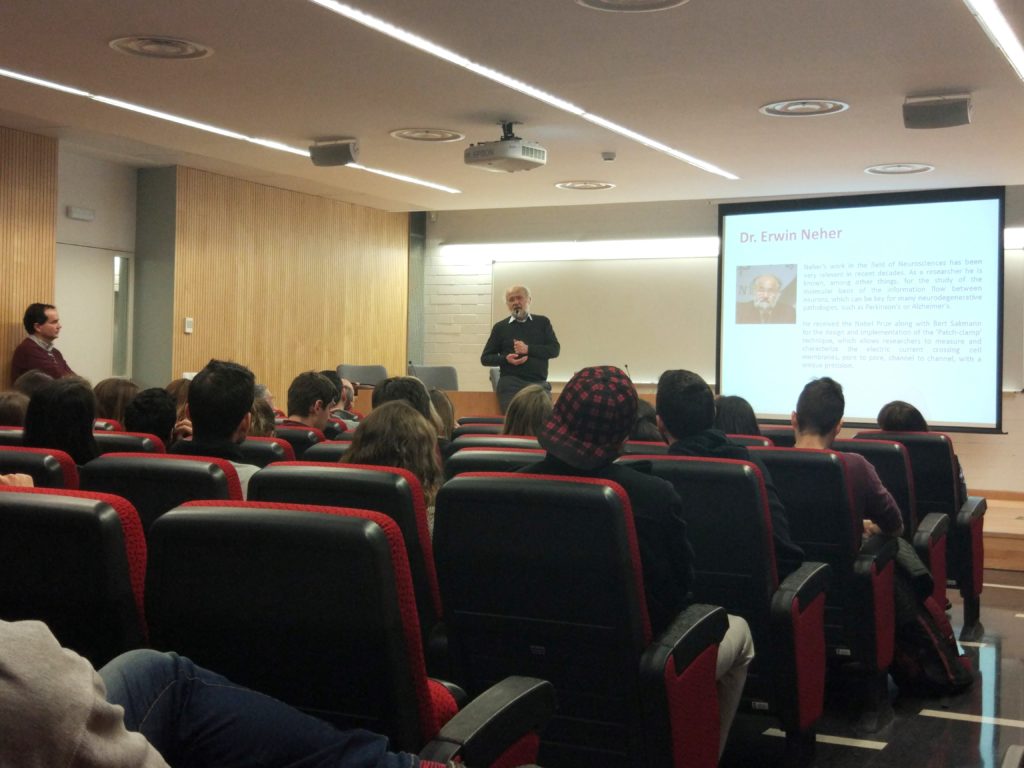The winner of the 1991 Nobel Prize for Medicine visits the institute and talks to its younger researchers
Last Wednesday, February 21st, the Bellvitge Biomedical Research Institute (IDIBELL) welcomed professor Erwin Neher, Nobel Prize in Physiology or Medicine in 1991, to participate in an informal meeting with the pre and postdoctoral researchers of the institute. Erwin Neher is known, among other things, for the study of the molecular basis of the information flow between neurons, which can be key for many neurodegenerative pathologies, such as Parkinson’s or Alzheimer’s. He received the Nobel Prize along with Bert Sakmann for the design and implementation of the ‘Patch-clamp’ technique, related to the individual or multiple study of ion channels.
Invited by the head of the neuroscience program of IDIBELL and professor at the University of Barcelona, Francisco Ciruela, Erwin Neher had the opportunity to visit the facilities of the program, whose scientists work on topics related to those of his interest, and talk with its young researchers, with whom he shared his experiences and exchange opinions on scientific and non-scientific topics, such as the current challenges of neurosciences.
Neher’s work in the field of Neurosciences has been very relevant in recent decades. Born in Landsberg, (Germany) in 1944, he is a physician and physicist and also studied biochemistry at the universities of Munich, Germany, and Wisconsin in the United States. As a young predoctoral fellow, Professor Neher decided to study how electric currents due to ionic movements regulated various biological functions, such as the transmission of nerve impulses, muscle contraction or the activation of receptors for the perception of visual, auditory and tactile stimuli, among others. Neher realized that in order to understand all these basic phenomena, he had to look for ion channels, whose existence nobody had been able to demonstrate.
Therefore, together with Bert Sakmann, he designed and developed the patch-clamp technique, which allows researchers to measure and characterize the electric current crossing cell membranes, pore to pore, channel to channel, with a unique precision. This technique allowed him to demonstrate the function of the different types of ion channels, facilitating the understanding of diseases such as diabetes or cystic fibrosis and the development of new drugs.

